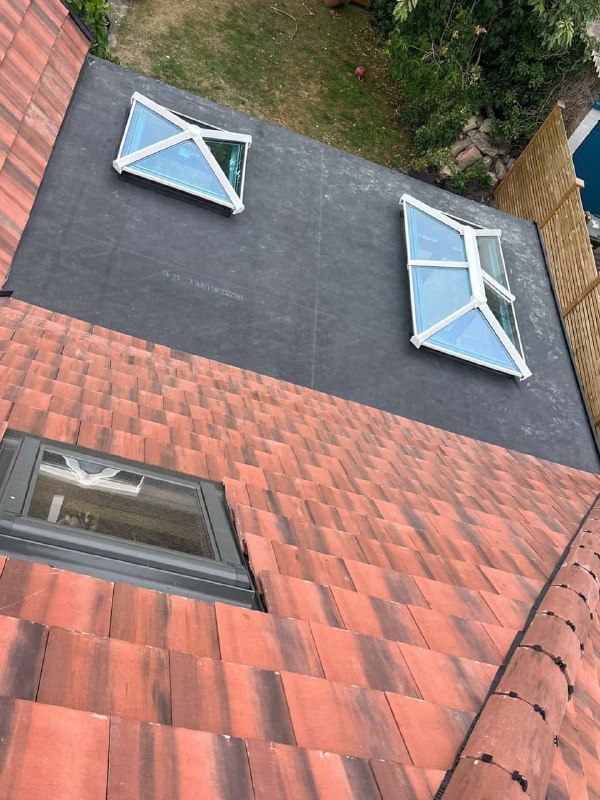9 Things to Do Immediately After Discovering a Roof Leak
A leaking roof can cause significant damage if not dealt with quickly. From water-stained ceilings to damp insulation and structural issues, even a small leak can escalate into a costly problem if ignored. Knowing what to do in the moments after discovering a leak can make all the difference in protecting your home. For property owners in Hitchin, Hertfordshire, JYT Roofing Hitchin provides expert roof repair and maintenance services to help prevent further damage and restore your roof’s integrity.
Why Immediate Action Is Important
Roof leaks rarely fix themselves. Water intrusion spreads fast—seeping through insulation, plaster, and timber. Acting quickly minimises the damage and helps maintain your home’s safety and comfort. Even temporary steps can prevent further issues until a professional inspection and repair are carried out.
Here are nine practical steps to take the moment you discover a roof leak.
1. Contain the Water
Your first priority is to prevent the water from spreading. Place a bucket, pot, or any large waterproof container beneath the leak to catch dripping water. If the leak is causing splashes, lay a towel or plastic sheet around the base to absorb excess moisture.
If the water is pooling behind a bulging ceiling, gently pierce the centre of the bulge with a screwdriver to release the trapped water. This may seem counterintuitive, but it prevents the ceiling from collapsing under the pressure.
2. Move Valuables Out of the Way
Protect furniture, electronics, carpets, and personal belongings from water exposure. Move them to a dry area or cover them with plastic sheeting or waterproof tarpaulin. Quick action here can save you from secondary damage caused by moisture or staining.
3. Identify the Leak Source
While the visible drip may come from one area, the actual source of a roof leak can be elsewhere. Water often travels along beams or insulation before finding a weak point. Check the loft or attic for damp insulation, water trails, or dark patches.
If it’s safe to do so, trace the path of the water upwards to locate the likely entry point. JYT Roofing Hitchin advises homeowners not to climb onto the roof during bad weather. It’s always best to wait for professional assistance for a proper inspection.
4. Relieve Pressure in the Ceiling
If water builds up behind the ceiling plaster, it can cause sagging or cracks. Using a small tool, gently puncture the lowest point of the bulge to allow water to drain in a controlled way. Place a container underneath to catch the flow.
This measure prevents a sudden ceiling collapse and limits structural stress caused by water weight.
5. Dry Out the Area
Once the leak is contained, use fans or dehumidifiers to dry the affected area. This helps to prevent mould and mildew from forming. Keep air circulating by opening windows if the weather allows.
If insulation or plasterboard is soaked through, it’s best to have a professional roofer or builder assess whether it needs replacing to prevent long-term issues.
6. Check Your Loft and Roof Space
Inspecting the loft can give you valuable insight into the cause of the leak. Look for:
- Wet or darkened insulation
- Dripping along rafters or roof joints
- Light seeping through the roof where it shouldn’t
- Damp smells or visible mould
If you notice any of these signs, avoid touching the area directly and make note of what you find. Sharing these details with JYT Roofing Hitchin helps the roofing team identify the problem faster during their inspection.
7. Take Photos and Notes
Documenting the leak is important for understanding the extent of the problem. Take clear photos of:
- The leak’s location inside your home
- Any visible damage to ceilings, walls, or belongings
- Damp patches or water trails in the loft
Keeping a detailed record helps professionals assess the situation accurately and ensures no aspect of the damage is overlooked during repair.
8. Check Outside (When Safe)
Once the weather improves, safely observe your roof from ground level. Look for any obvious signs of damage, such as:
- Missing, cracked, or slipped tiles
- Blocked gutters or overflowing downpipes
- Damaged flashing around chimneys or vents
- Tree branches or debris resting on the roof
Do not attempt to climb the roof yourself, especially if it’s wet or windy. The specialists at JYT Roofing Hitchin have the proper equipment and training to conduct a thorough inspection safely.
9. Contact a Professional Roofing Company
The final and most important step is to arrange a professional roof inspection. Even if the leak seems minor or stops once the rain does, underlying issues may still exist. Water can penetrate under tiles, saturate underlay, or damage internal timbers.
JYT Roofing Hitchin provides professional leak detection and repair services throughout Hitchin, Hertfordshire. Our experienced team inspects every aspect of the roof—from tiles and flashing to gutters and ridge caps—to ensure the source of the problem is fully resolved.
A prompt response from qualified roofers prevents small leaks from developing into major repairs and restores peace of mind knowing your home is protected.
Common Causes of Roof Leaks
Understanding what typically causes roof leaks can help prevent future problems. Some of the most common reasons include:
- Broken or missing tiles allowing rainwater to enter beneath the surface
- Worn flashing around chimneys, vents, or skylights
- Blocked gutters causing water to back up and overflow onto the roof
- Poor roof ventilation leading to condensation build-up
- Aged roofing materials losing their ability to repel water effectively
Regular maintenance from JYT Roofing Hitchin can identify these issues early and stop leaks before they occur.
Preventing Future Roof Leaks
Once the immediate issue is under control, prevention becomes key. Consider these ongoing maintenance steps:
- Schedule routine roof inspections at least once a year
- Keep gutters clear of leaves and debris
- Trim overhanging branches that can damage tiles
- Check the loft after heavy storms for early signs of leaks
- Replace cracked or missing tiles promptly
These simple yet effective measures help maintain your roof’s condition and reduce the likelihood of future leaks.
Conclusion
A leaking roof can cause serious problems if not addressed promptly, but knowing how to respond can minimise damage and keep your property safe. By acting quickly—containing the water, protecting your home’s interior, and arranging professional help—you ensure the issue is managed before it escalates. For homeowners in Hitchin, Hertfordshire, JYT Roofing Hitchin provides expert leak detection, roof repairs, and preventative maintenance to keep your roof watertight and your home protected all year round.
Call us on: 01462 418 494
Click here to find out more about JYT Roofing Hitchin
Click here to complete our contact form and see how we can help with your roofing needs.

